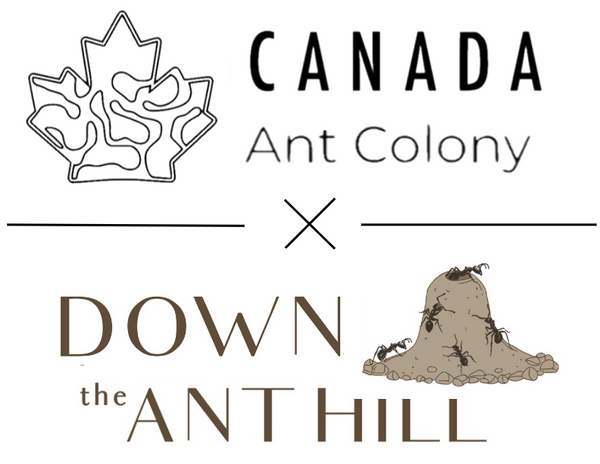Ants living in Canada, and other northern areas require a dormancy period to simulate the winter months. Ants create more glycerol, which serves as an anti-freeze to prepare for the winter. During this time, ants need to be kept in cold temperatures
Is My Colony Trying to Hibernate?
Usually a colony will exhibit signs when it is about to hibernate. There are some genus-specific signs and some general traits. Specifically, colonies will have distended gasters (filled with food), and will become slow down behavior, particularly foraging behaviour. Frequently small colonies in a non-hibernating state will exhibit similar behaviour, and genus-specific clues may be more useful.
General traits include a slowdown in behaviour and distended gasters as colonies
Certain genera, including but not limited to Aphaenogaster, Camponotus, Lasius, Tapinoma, Tetramorium, Solenopsis, and Myrmica will slow down or stop egg production, and larvae will stop growing. In particular, Camponotus larvae will slightly shrivel and become yellow.
Certain genera, including but not limited to Formica, will stop brood production altogether, (No brood will be present in the nest)
You may notice that some colonies do not exhibit any specific behaviour.
IT SHOULD BE NOTED THAT MANY SPECIES APPEAR TO ONLY NEED HIBERNATION IN THEIR FIRST YEAR, PARTICULARLY, NO WORKERS WILL BE PRODUCED AND/OR WEAKER/LESS WORKERS WILL BE PRODUCED. FOR MANY OF THESE SPECIES, HIBERNATION AFTER THE FIRST YEAR IS OPTIONAL, including but not limited to certain species of (Formica, Myrmica and Camponotus)
Pre-Hibernation Care
Ants should be fed heavily before hibernation, as they will require food stores for the winter.
During hibernation, an ant-keeper must pay attention to ensure the formicarium or test tube is properly hydrated. You may need to check up on a regular basis. Thankfully, a cold nest loses much less moisture due to a reduction in evaporation.
You can probably get away with watering the nest in intervals 2-3x as long.
Ex. if you watered your colony once per week, you can switch to a schedule of once every 2-3 weeks during hibernation
Some species, such as Ponera and Stigmatomma, must eat during hibernation unless they are kept in sub-zero temperatures. For most species, no feeding is required, but it is always safe to offer some sugar source.
Techniques
Ants can be kept anywhere where it is cool. I myself use a mini fridge, but alternatives include wine coolers, or a cool garage. You must pay attention to ensure that test tubes do not freeze, since it will enter the "ant" part of the tube.
As for temperature, ants have very different cold tolerances. As a catch-all, I hibernate my ants around 5 degrees Celsius or around 40 degrees Fahrenheit. Wood-nesting species, like Camponotus or Myrmica rubra can survive much deeper winters, going far below zero-degree temperatures.
Hibernation Length
Some species need longer hibernation lengths, while some colonies require short hibernation lengths.The following hibernation lengths are recommended, and you are free to make your own adjustments. Some of this information was compiled by Crystals Scherer
Aphaenogaster: 3 months
Brachymyrmex: 3 months
Camponotus: 4 months
Crematogaster: 3-4 months
Formica: 3-4 months
Lasius: 4 months
Myrmica: 2-3 months
Tapinoma: 3 months
Temnothorax: 3 months
Tetramorium: Can be kept without hibernation, but does ideally with 3 months
Solenopsis: 3 months
Is Hibernation Necessary for Ants?
As a general rule, native Canadian species require hibernation periods. Otherwise, the queen's lifespan will be drastically shortened and/or will lay less eggs. Some myrmicine ants, like Tetramorium, Myrmica and Aphaenogaster do not seem to mind as much. However, they do much better with a hibernation period than without.
We sell some species of ants found in greenhouses and non-native to Canada, and these species do not require hibernation. In addition, we are one of, if nt the only legal importer of Pogonomyrmex occidentalis queens from the United States, and those do not need a hibernation period. It may be important to note that colonies in hot places near mountain ranges, such as Formica in the Californian mountains, do better with a 3-4 month hibernation period as well.
